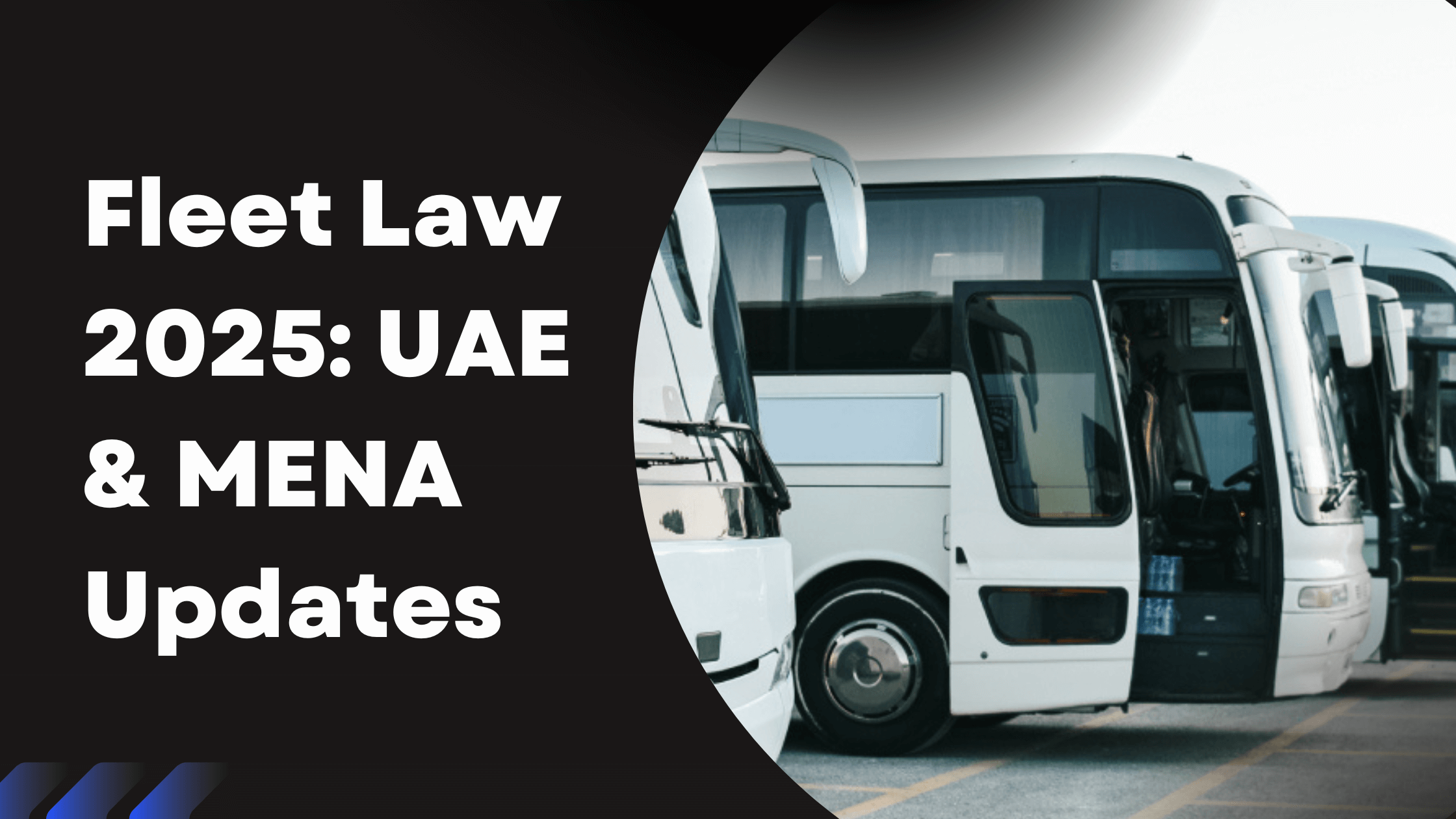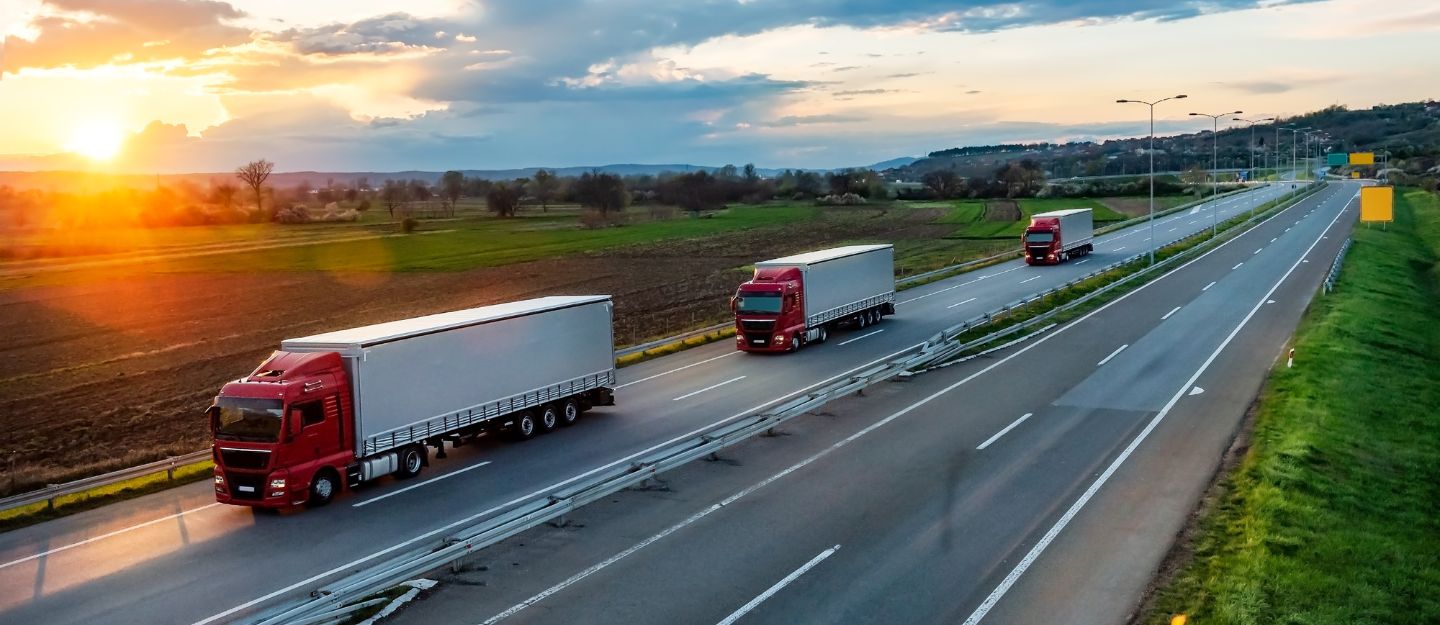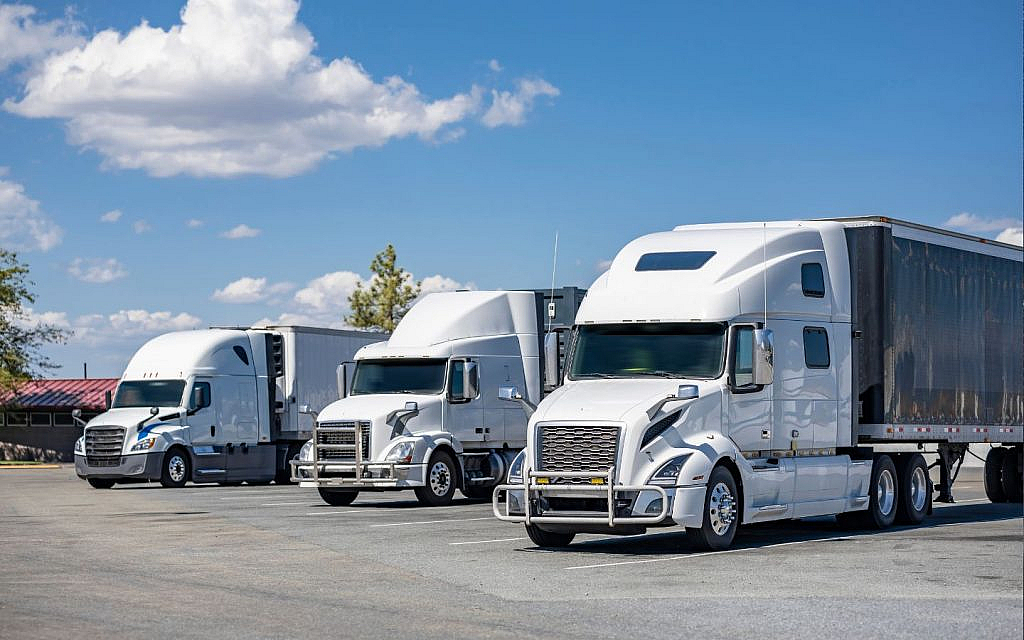New UAE & MENA Transport Laws: What Fleet Owners Must Know in 2025
Jun 1, 2025 Resolute Dynamics
 2025 is just around the corner, and for those of us running fleets across the UAE and MENA, the transport laws are about to get a serious upgrade. Whether you’re managing long-haul trucks, city buses, or a mixed-use fleet, new compliance rules are coming—and they’re not optional.
2025 is just around the corner, and for those of us running fleets across the UAE and MENA, the transport laws are about to get a serious upgrade. Whether you’re managing long-haul trucks, city buses, or a mixed-use fleet, new compliance rules are coming—and they’re not optional.
Here’s everything I’ve learned about what’s changing, why it matters, and how we can get ahead before regulators knock on our doors.
✅Key Takeaway:
In 2025, transport laws across the UAE and MENA are going digital, with AI and automation at the core. Real-time telematics, ADAS, and instant safety logs are now required. For fleet operators, it’s less about chasing forms—and more about showing safety, tracking drivers, and being audit-ready through connected tech.
What’s Changing in 2025? A New Era for Fleet Regulations in UAE & MENA

2025 is going to be a landmark year for transport legislation in the UAE and the broader MENA region. For decades, transport regulations were focused on paperwork, licensing, and physical inspections. But that era is ending. A wave of digital-first transport compliance laws is being introduced, aimed squarely at transforming how fleets operate—and how governments enforce rules.
These upcoming regulations are part of a broader shift toward smart mobility infrastructure, where vehicles are no longer just machines—they’re data-generating, AI-assisted systems that actively contribute to road safety and operational efficiency.
Let’s break down what’s really changing.
Digital Compliance Is Now Mandatory
Forget paper logs and clipboard inspections. Under the new laws, fleet operators will be required to use real-time data systems that automatically track, store, and transmit:
-
Vehicle location and route deviation
-
Speed and harsh braking events
-
Driver fatigue and distraction levels
-
Unauthorized vehicle access or usage
-
Fuel consumption and idle time
If your vehicles can’t communicate with centralized control platforms, you may soon be out of compliance.
Advanced Driver Assistance Systems (ADAS) Become Standard
The UAE and Saudi Arabia are making ADAS components legally mandatory for many commercial vehicle classes. This includes:
-
Forward Collision Warning (FCW)
-
Lane Departure Warning (LDW)
-
Blind Spot Detection
-
Automatic Emergency Braking (AEB)
Fleet vehicles must now be equipped to not only detect danger but to warn drivers—and in some cases, intervene automatically.
These systems are no longer “nice to have.” They’re now a required part of your vehicle compliance checklist.
Connected Vehicle Infrastructure Is Being Rolled Out
Smart cities like Dubai and Abu Dhabi are expanding V2X (vehicle-to-everything) communication systems. These systems connect vehicles to:
-
Road infrastructure (e.g., smart traffic signals)
-
Emergency services
-
Law enforcement databases
-
Weather and hazard alerts
To comply with these initiatives, your fleet must be equipped with vehicle telematics systems that support real-time data exchange and cloud integration.
Telematics Reporting to Government Portals
Many MENA transport ministries, including those in the UAE and KSA, will require fleet data uploads to centralized portals. These will include:
-
Daily trip logs
-
Safety incident records
-
Fuel efficiency reports
-
Driver performance analytics
The goal? Improve oversight, reduce accidents, and measure carbon emissions—all through automated digital reporting.
If your current system doesn’t have API integration with regulatory platforms, it’s time to upgrade.
AI-Powered Safety Is Now a Legal Expectation
Artificial intelligence isn’t just a tech trend—it’s becoming a compliance requirement. Laws are beginning to reference systems that can:
-
Detect driver distraction or drowsiness using facial analysis
-
Monitor vehicle behavior and predict potential risk
-
Alert fleet managers in real-time when violations occur
-
Automatically disable a vehicle in unsafe conditions
AI is no longer a “value add.” In many regulatory environments, it’s being positioned as a core safety control.
Penalties for Non-Compliance Will Increase
Authorities aren’t just handing out tickets anymore. In 2025, expect:
-
Real-time fines issued automatically through telematics logs
-
Fleet operating license suspensions for repeated violations
-
Insurance claim denials if ADAS or telematics were disabled at the time of an incident
That’s why ensuring your fleet is digitally compliant isn’t just about staying legal—it’s about protecting your business.
Key Entities Driving These Changes
Understanding who is behind the legislation can help anticipate future shifts:
-
UAE Ministry of Energy and Infrastructure
-
Saudi Public Transport Authority (PTA)
-
GCC Unified Transport Council
-
RTA Dubai (Roads & Transport Authority)
-
Qatar’s Ministry of Transport and Communications
These bodies are pushing coordinated updates to standardize transport across the Gulf, ensuring that vehicles crossing borders follow the same digital safety protocols.
Key 2025 Transport Laws You Must Know

These regulatory changes are not only reshaping how fleet owners operate, but also how they equip, monitor, and document every vehicle under their command. Below is a breakdown of the most impactful legal updates coming in 2025 across the UAE, Saudi Arabia, and the broader MENA region.
UAE: AI-Driven Safety Compliance Laws
The United Arab Emirates is pushing to become a global benchmark for AI-powered road safety. In 2025, new transport regulations are coming into effect that focus on driver accountability, intelligent data recording, and real-time behavior analytics.
Key Legal Requirements:
-
Driver Monitoring Systems (DMS): All commercial vehicles will be required to use AI-based systems that monitor driver attentiveness. These systems detect signs of fatigue, distraction (like phone usage), and even emotional states such as aggression or drowsiness.
-
Smart Speed Compliance: Vehicles must automatically adjust speed based on geo-fenced speed zones, using GPS and onboard systems. Manual overrides will be logged and could be flagged for violation.
-
Event-Based Video Recording: Dash cams aren’t just there to record the road—they need to react. When a driver brakes hard, swerves suddenly, speeds, or gets into a crash, the camera should kick in automatically. That footage must be stored securely and ready to share if regulators come knocking.
-
Integration with National Telematics Platforms: Operators will need to sync their data with the UAE’s national vehicle compliance portal. Expect mandates around real-time uploads, incident timestamps, and audit trails.
Non-Compliance Risk:
Vehicles that fail to meet these benchmarks could face instant suspension of operational licenses, remote immobilization, and hefty fines, particularly for repeat violations.
Saudi Arabia: Cross-Border Telematics and Fleet Traceability
In 2025, Saudi Arabia is tightening controls on fleet movement and logistics across borders. These updates are designed to enhance operational traceability, combat smuggling and fraud, and enforce driver performance standards across long-haul routes.
Key Legal Requirements:
-
Certified Telematics Devices: Any fleet entering or operating within KSA borders must be fitted with approved telematics systems that can transmit:
-
Engine health data
-
Cargo status
-
Speed and braking logs
-
Route adherence
-
-
Remote Immobilization Protocols: The government is expected to enforce technology that allows real-time vehicle disabling in the case of serious compliance violations or security threats.
-
Geofencing Requirements: Vehicles must respect virtual boundaries. Entering restricted or off-limits zones may trigger automatic alerts or penalties. For example, freight trucks may be banned from central business districts during peak hours.
-
Driver ID Verification: Through biometric or RFID-based systems, KSA is moving toward individual driver tracking, ensuring accountability for behavior behind the wheel.
Consequences of Non-Compliance:
Violations may result in confiscation of goods, cross-border delays, and possible deportation of non-compliant drivers under labor enforcement laws.
MENA-Wide Standardization of Transport Compliance Laws
Across Qatar, Jordan, Bahrain, Oman, Egypt, and Lebanon, transport safety standards are starting to align. The aim? Build a unified system where freight, passenger travel, and vehicle compliance work across borders—without hitting roadblocks.
Shared digital infrastructure is at the core of this shift, laying the groundwork for smoother movement and stronger oversight across the region.
Key Legal Trends:
-
Electronic Braking Systems (EBS): All heavy commercial vehicles must now be equipped with EBS to prevent brake fade, particularly during downhill or high-load operations. This is becoming a regional baseline requirement.
-
Lane Keep Assist (LKA): Authorities are pushing this as a required ADAS feature in buses, taxis, and cargo fleets operating in urban environments.
-
Fatigue Detection Systems: These systems are now being written into law in countries like Qatar and Oman for long-distance drivers. Using sensors and AI, they monitor blink rates, steering stability, and heart rate variability to detect driver fatigue.
-
Unified Safety Reporting Format: A growing number of MENA countries are introducing standardized compliance logs, where all event data—whether from dash cams, engine modules, or GPS—is stored in a unified format. This helps regulators access data seamlessly across borders.
Interoperability Emphasis:
Fleet operators managing regional routes must now ensure that their telematics and compliance systems are GCC-compatible, with multilingual dashboards and adaptive firmware for local regulations.
These legal updates are not just bureaucratic shifts—they reflect a massive digital transformation in transport governance. Fleets must evolve from analog operations to smart, sensor-driven ecosystems that can respond to risk in real time and prove compliance instantly.
This is no longer just about avoiding fines. It’s about building future-ready fleets that can thrive in the region’s new mobility economy.
What This Means for Fleet Owners

These laws aren’t just legal obligations—they’re technical expectations. That means your vehicles must be equipped with smart systems that handle:
-
Real-time vehicle tracking
-
Onboard diagnostics (OBD-II or higher)
-
Driver alertness detection
-
Automatic incident recording and reporting
If your fleet lacks these capabilities, you risk non-compliance fines, vehicle downtime, and worst of all, unsafe operations.
How Resolute Dynamics Helps You Stay Compliant
Resolute Dynamics is at the front of this transformation. Our systems don’t just collect data—they Capture, Connect, and Control it intelligently.
✅ Capture
AI cameras detect road signs, lane shifts, and drowsy drivers in real time.
✅ Connect
Our telematics solutions stream data directly to control centers, helping you prove compliance instantly.
✅ Control
Smart vehicle controllers enforce geo-speed limits, monitor braking patterns, and optimize fuel use without driver input.
These technologies are field-tested in over 20 countries, trusted by fleets with more than 200,000 connected vehicles.
Fleet Compliance Checklist for 2025
Here’s a simple but powerful checklist to prepare:
-
Install ADAS cameras with event-triggered recording.
-
Upgrade telematics devices to real-time, cloud-synced models.
-
Use fatigue detection systems for long-distance drivers.
-
Automate reporting of speeding, harsh braking, and route deviations.
-
Train drivers on how smart compliance protects them.
Are You Ready for a Transport Audit?
Ministries across the region are deploying mobile inspection units with vehicle data scanners. They’ll check for:
-
Timestamped video logs
-
Driver scorecards
-
Proof of route adherence
-
Idle time and emission summaries
Having these ready could mean the difference between a smooth pass and a compliance penalty.
A Real-World Example
One logistics company in Sharjah implemented Resolute Dynamics’ AI vision + control bundle. Within 6 months:
-
Compliance violations dropped 73%
-
Fuel consumption went down 18%
-
Fleet incident rates fell by nearly half
They didn’t just meet legal standards—they turned compliance into a performance booster.
Final Thoughts: Turning Rules Into Roadmaps
Yes, the 2025 laws are strict. But they’re also a roadmap to safer, smarter operations. Instead of seeing them as red tape, think of them as an investment in your drivers, vehicles, and business.
If you’re ready to lead rather than catch up, the time to act is now.